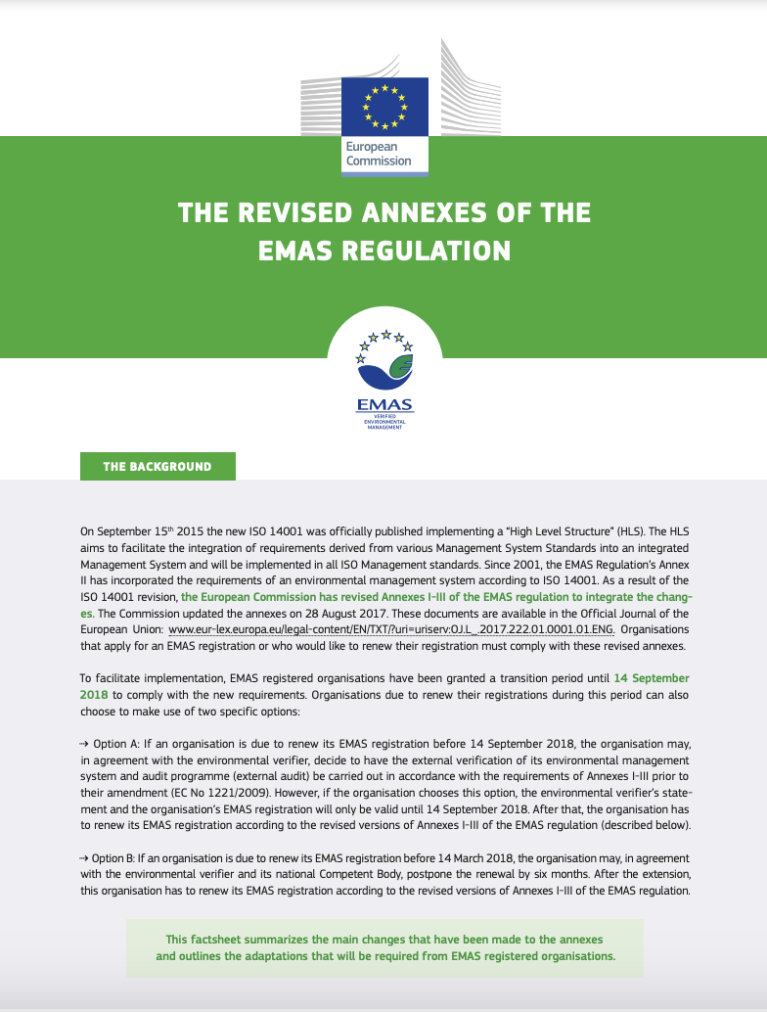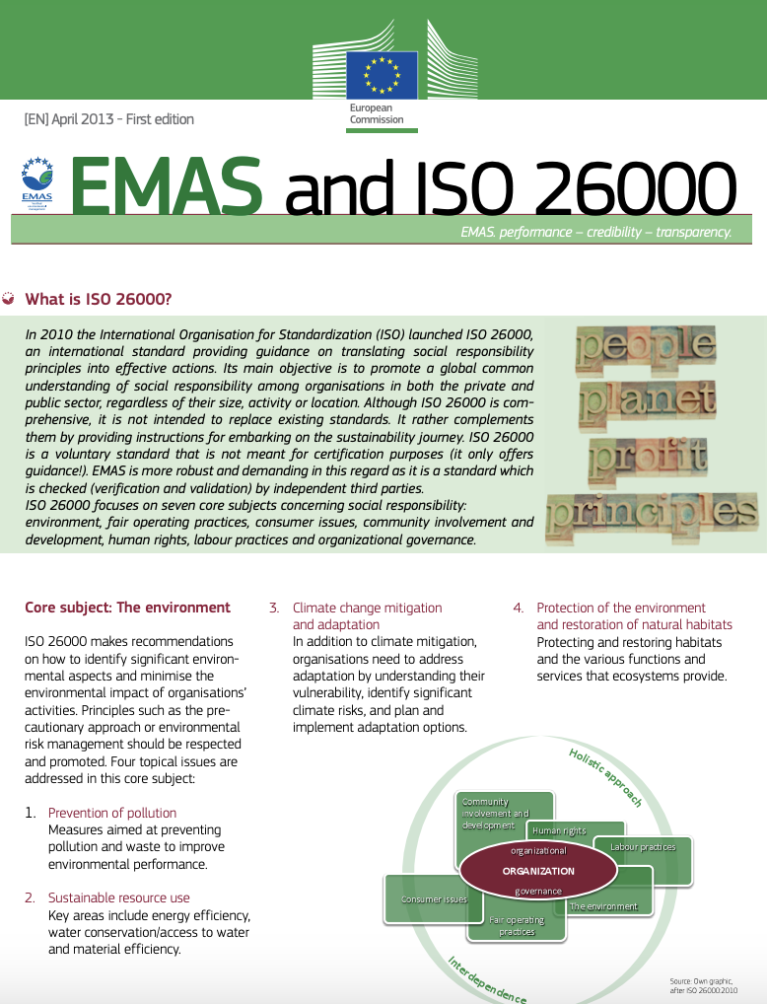Sectoral reference documents
The sectoral reference documents are guidance documents provided by the European Commission to inspire and guide organisations in specific sectors to enhance their environmental performance. These documents feature best environmental practices, performance indicators, and benchmarks of excellence.
To effectively use the reference documents, organisations should compare their internal processes with the recommended practices and benchmarks to identify areas for improvement and include them in their environmental programs. When selecting indicators for environmental reporting, consideration should be given to the sector-specific performance indicators outlined in the reference documents.
It is crucial to mention in the environmental statement how the organisation has incorporated the relevant best environmental practices and benchmarks from the relevant sectoral reference documents, demonstrating a commitment to continuous improvement.
- Food and beverage manufacturing
- Electrical and electronic equipment manufacturing
- Manufacture of fabricated metal products
- Construction
EMAS amendment 2017/18 - All changes at a glance
In the course of the planned amendment of the EMAS Regulation and the amendment of ISO 14001:2015, the European Commission revised Annexes I-IV of the EMAS Regulation and the EMAS User Guide. The amendment aimed to ensure the continued compatibility of EMAS with an environmental management system according to ISO 14001. This brochure serves as a reference document for organisations to guide them through the changes to the Amendment of the EMAS Regulation.

Fact sheet: 'The revised Annexes I, II and III of the EMAS Regulation'
In 2017, Annexes I to III of the EMAS Regulation were revised. To help organisations implement the changes, a factsheet summarises the new requirements and their significance.

Reinforcing added value for EMAS (RAVE) study
The study explores measures for strengthening EMAS added value to authorities and organisations. It investigates three aspects in particular: the potential of regulatory relief in driving EMAS registrations and bringing benefits to authorities, the capacity of EMAS to facilitate reporting to authorities and its capacity to trigger business opportunities. The experience of 11 EU countries is presented and best practices are highlighted to help EU countries make the best use of EMAS. Download the study on EMAS added value for authorities and organisations.

Compendium of promotional and policy support measures in the Member States
The Compendium on EMAS promotion and policy support gives an overview of instruments used in EU countries to support and reward the efforts of EMAS organisations. It explains the benefits of EMAS incentives for participating organisations and also for regulators and policymakers, providing a wide range of examples from different EU countries.
Download Annex II to Compendium on EMAS promotion and policy support - regulatory relief
Download Annex IV to Compendium on EMAS promotion and policy support - innovative proposals
Download Annex V to Compendium on EMAS promotion and policy support - reporting obligation

And its separate annexes:




More information on the study is also available in the RAVE study section of the website.
EMAS Fitness Check: Evaluation of the EMAS Regulation
The Fitness Check was carried out in 2017 by the Commission to analyse the relevance, effectiveness, efficiency and EU added value of the EMAS regulation. It is accompanied by an evaluation study providing numbers on EMAS, analysing its costs and benefits and its contribution to reducing environmental impacts. The study also looks ahead and discusses different scenarios for the future of EMAS.
Take a look at the different documents:





Older publications
Fact Sheet 'EMAS and the revised ISO 14001'
This document summarises the changes in the standard ISO 14001 published in 2015. Because EMAS integrates ISO 14001 (so that it is very easy to step up to EMAS), the fact sheet presents the expected adaptations to EMAS. It is available in EN, IT, ES, FR, PL, DE (2016).
A more recent fact sheet presents the changes made to the Annexes of the EMAS Regulation to integrate this new version of ISO 14001. It is available in EN (2017).
Fact Sheet 'EMAS and Energy Management'
Management systems such as EMAS and ISO 50 001 help companies improve their energy efficiency. This fact sheet presents the links between the two and helps you identify which one is best for you.

Fact Sheet 'Greening the campus with EMAS'
This two-page document explains why and how universities can use EMAS to become more sustainable (2013):

Fact Sheet 'EMAS in the tourism sector'
The tourism sector has significant environmental impacts. Using EMAS to reduce them also makes sense from an economic point of view. Discover why in the fact sheet (2013):

Fact Sheet 'EMAS and ISO 26000'
ISO 26000 is an international standard providing guidance on social responsibility. EMAS can be used to implement its recommendations, as demonstrated in this fact sheet (2013):

Fact Sheet 'EMAS Global: Superior Environmental Management Worldwide'
EMAS is applicable worldwide. Companies and other organisations outside the European Union will find more information on how to apply in this fact sheet (2012).

Fact Sheet 'EMAS Boosts Resource Efficiency'
Resource efficiency is a priority for the European Union. This two-page document highlights the contribution of EMAS-registered organisations and describes how EMAS can help any organisation to better manage its resources. The 2011 fact sheet is still relevant and can be downloaded here.


